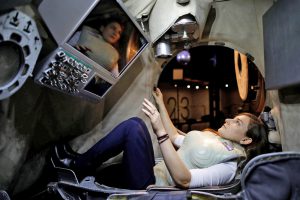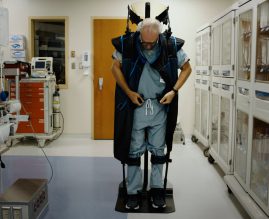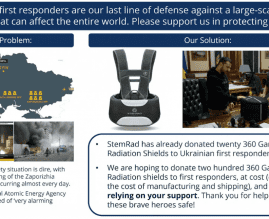NASA Will Send the AstroRad Radiation Shield into Space – Twice
12.31.18 | Monday | Nofit Amir
The AstroRad – StemRad’s space radiation shield – will be launched into space in May 2019 for a round of testing by astronauts on the International Space Station. Then, in 2020, the AstroRad will be launched again for radiation testing on NASA’s Orion Exploration Mission-1 [EM-1]. The EM-1 mission is a stepping stone mission to prepare for NASA’s future manned Mars missions.
Radiation Dangers in Space
Beyond our atmosphere’s protective barrier, astronauts are exposed to high levels of harmful radiation. This radiation gradually poisons the body, causing cells to turn cancerous. In addition, astronauts run the risk of being exposed to a solar flare – a high-radiation event that may endanger the lives of astronauts – which increases with time in space. Thus, long journeys such as NASA’s planned mission to and from Mars (projected to take around three years) requires innovative solutions to protect astronauts from ionized radiation dangers in deep space.
StemRad’s wearable protective radiation shield for deep space, the AstroRad, developed together with US-based Lockheed Martin, employs the same selective shielding technology used in StemRad’s 360 Gamma (for first responders, the military, workers in the nuclear industry and for civilians). Protective materials shield vulnerable areas in and around the pelvic region that are most sensitive to radiation damage. The wearer’s bone marrow, home to critical stem cells whose destruction leads to Acute Radiation Syndrome (ARS), is particularly well shielded.
One of the key challenges in space travel is to maintain the astronauts’ medical well-being and ultimate survival. As a relatively recent article (Cummins et al., 2016) states: “The threat of radiation exposure is considered to be the primary hazard associated with spaceflight… Completely shielding astronauts from radiation while inside a space vehicle would require prohibitively large masses.” StemRad’s selective shielding technology, which saves weight while exponentially reducing the risk of radiation-related death, may thus bring long-term space travel a significant step closer.

Writes content for StemRad’s website, social media, and newsletter. She is an advocate with over twenty years of experience of writing high-end content in academic and industrial settings.



